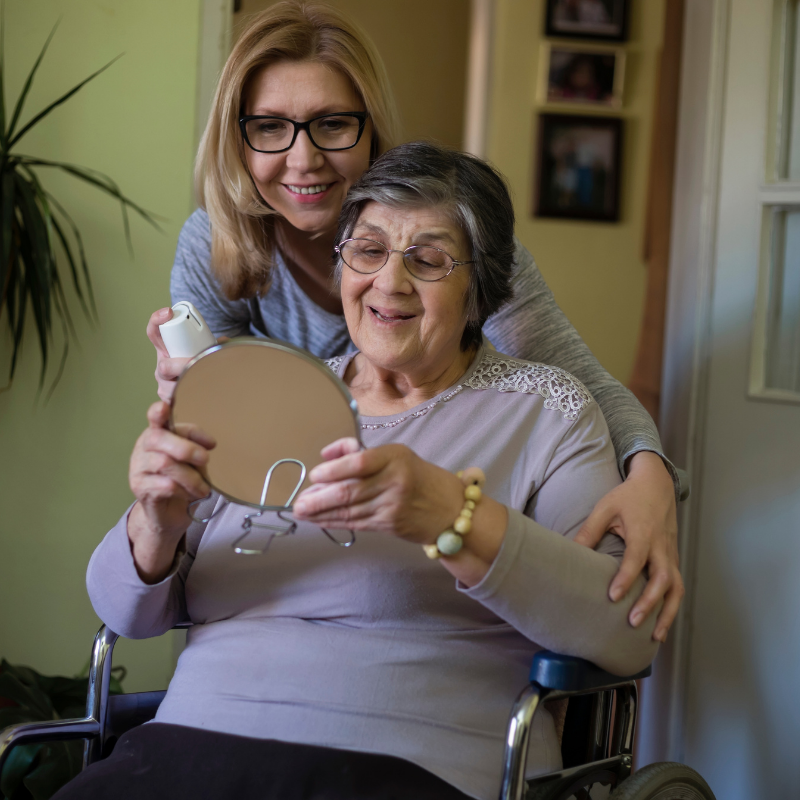It’s the start of another new year. And you’re back in the grind. Not only working your day job but caring for a loved one too. It goes something like this:
You work. You care. You struggle, too.
This dynamic has become one of the driving forces behind today’s talent shortage, challenging companies across America. The employee has also become a caregiver.
This month I thought it would be helpful to share more about the “why” behind the problem and tools and solutions to help change outcomes. The goal is to help the employer and the employee better navigate this issue together while still maintaining good talent in the workplace and providing everyone a better work-life balance in 2022.
First, some hard-core data:
- Approximately 41.8 million Americans have provided unpaid care to an adult age 50 or older in the prior 12 months.
- Three in 5 caregivers are women (61%), and 2 in 5 are men (39%)
- On average, caregivers of adults are 49.4 years old, with a median age of 51.0 years.
- Caregivers are found in every generation – from Millennials to Baby Boomers.
- Most caregivers take care of a relative (89 percent).
- The average duration of caregiving is 4.5 years.
- On average, caregivers spend 23.7 hours per week providing care, with a median of 10 hours.
- Six in 10 employed caregivers work full time (60 percent), and another 15 percent work between 30 and 39 hours. On average, employed caregivers work 35.7 hours a week.
- Nearly one in five caregivers report high physical and financial strain due to their caregiving duties.
- Caregivers with at least some college education show a marked increase in the difficulty of care coordination (34 percent vs. 23 percent in 2015.) (source: The Many Faces of Caregivers: A Close–Up Look at Caregiving and Its Impacts. Transamerica Institute’s Inaugural Study of Caregivers, September 2017).

Alarming. And unfortunately, a problem that’s growing in part due to the impact of COVID-19 along with the Silver Tsunami – that aging baby boomer population that’s living longer but doesn’t necessarily have enough financial resources to age in place or another home care setting.
As the statistics showed us, the working caregiver can be a partner, a relative, just a friend, or an adult child. There’s no doubt. Aging and caregiving these days? It’s complicated. Care coordination is one of the biggest challenges and is difficult for a non-professional to manage by themselves.
Here’s a classic case. See if you can relate. Mary is 45. She has a husband, two teenagers and has worked full time at an accounting firm for five years. She’s a thriving and vital breadwinner of the family. Suddenly, her 70-year-old mother has a stroke. Mary’s father is overwhelmed by the process of getting the appropriate care in place as well as dealing with all the insurance paperwork, legal details, and long-term recovery options. Being a compassionate, caring daughter, Mary steps in to help, right? After a couple of months, that investment of family time has turned into another job. Caregiving. Mary struggles with the responsibilities at home and work. The toll on her wellness ultimately impedes her ability to be an effective, productive employee. She goes to all of you in H.R. to explore options. Meantime, Mary’s mother suffers a fall, and the situation is now worse. Mary ultimately leaves her job for a while through short-term disability or for good. It’s a typical story. Mary worked. She cared for her mom. She struggled with all the extra responsibilities. So, she left her job.
Meantime, Human Resource departments are repeatedly trying to troubleshoot these types of situations. As an H.R. team member, you’ve worked hard to help support this employee. You’ve cared for their well-being by offering current resources and benefits available through your company. And now, you’re struggling to handle the exit of one employee while simultaneously recruiting and training a new company worker that will be a good fit for your corporate culture. It’s a lot. I applaud you all for your tenacity.
So, is there a solution? Yes, there is. Every problem has a solution. In this case, it requires tapping into a hyper-targeted, comprehensive network of trusted resources that can handle every aspect of care and services needed for today’s aging population. That’s what we offer every day here at Senior Resource Connectors. We can guide you to the resources you need – including patient advocates, home health support, affordable living placement, special legal issues, and so much more.
Imagine being able to help that employee who’s become a new caregiver by giving them their own navigation tool. One wheelhouse of vetted-out services to support and guide them, along with their aging loved one, through this stage of the life journey.
You know, we can change the narrative of this story. I hear it going something like this:
We work together by networking smartly. We care by providing targeted, trusted resources in the senior care industry. As a result, we successfully maintain productive, healthy talent in the workplace.
And at the end of the day, hopefully, we all experience a little peace of mind.
Happy New Year, and remember to take care of yourself along the way!

